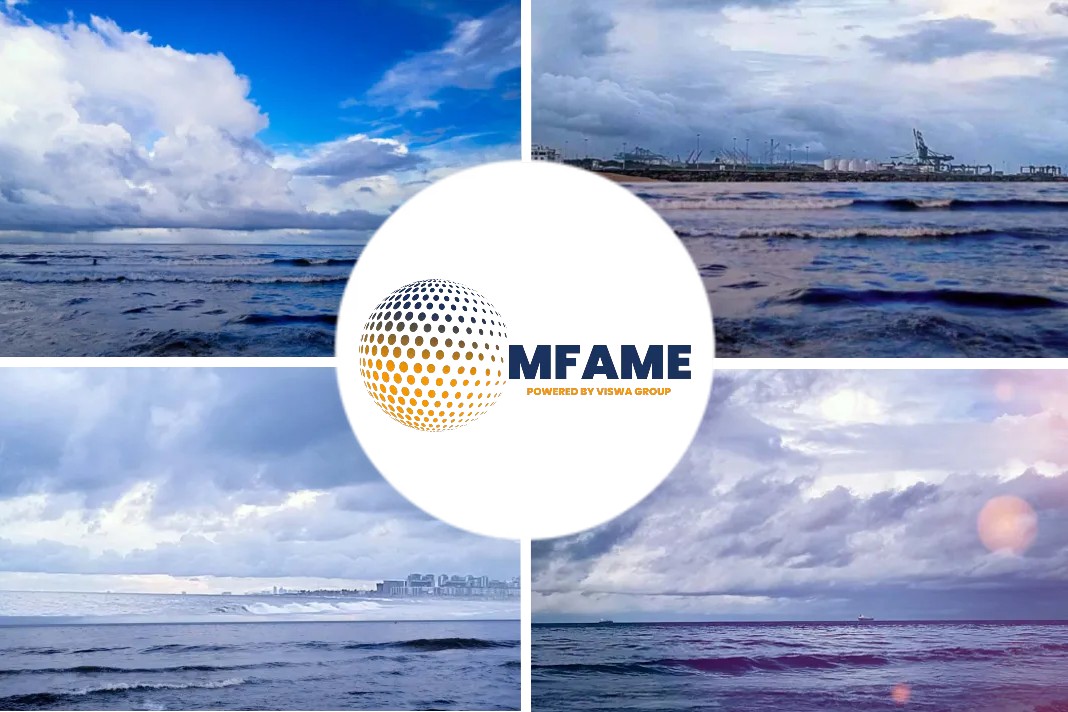On the night between 21 and 22 December 2016, the Danish offshore supply ships MÆRSK SEARCHER and MÆRSK SHIPPER capsized and sank in the Bay of Biscay, off the French coast, while being towed by another offshore supply ship, MÆRSK BATTLER, en route to Turkey. The Danish Maritime Accident Investigation Board issued an investigation report on the accident.
Summary
MÆRSK SEARCHER and MÆRSK SHIPPER were configured in a side-by-side towing setup during the voyage. During the passage of the English Channel, the fenders between the ships on tow failed, and the ships started to interact. This caused damage to the ships’ superstructure, which eventually compromised MÆRSK SEARCHER’s watertight integrity and led to water ingress.
MÆRSK SEARCHER capsized and sank, and subsequently MÆRSK SHIPPER was pulled under by MÆRSK SEARCHER. The crew on MÆRSK BATTLER carried out a controlled breakage of the towing wire and came loose of the foundered towage.
Probable Cause
The cause of the capsizing and foundering of MÆRSK SEARCHER and MÆRSK SHIPPER might seem simply to be the result of two ships being allowed to collide multiple times and a wrong choice of towing method. However, this assumption is oversimplified.
Instead, this accident calls for understanding the complex circumstances of the lengthy preparation process during a period of organisational changes, which resulted in the decision of using an unconventional towing method. In this case, the choice of towing method was made on the basis of the limitations of another tug than MÆRSK BATTLER itself, and there was no reason to change the towing setup to the setup recommended by external experts, as the risk connected to the side-by-side tow had been handled by the risk management system and was thereby reduced to an acceptable level.
Actions Taken
DMAIB has received information from Maersk Supply Service on the following actions taken after the accident:
- Management of change training programmes
- Improved risk assessment procedures and mitigation actions
- Review of operations by 3rd party experts
- Clear responsibilities and accountability
- Intensive training programmes of key personnel
Conclusions
- The DMAIB regards the foundering of the vessels as a systemic accident. This means that local and technical circumstances unfolding on board MÆRSK BATTLER during the voyage cannot be isolated from the preceding organisational events and circumstances taking place months earlier.
- When the towage was confronted with swell and waves causing increased motions of the ships, they did not behave as one unit, but as two individual units interacting. The only buffer separating the ships consisted of three fenders, which were unable to withstand the force of the coupled and interacting ships and hence failed.
- The crew on MÆRSK BATTLER did not perceive the direct contact between MÆRSK SEARCHER and MÆRSK SHIPPER as an emergency situation. They expected that the fenders of the side-by-side towing setup could fail during the tow and that the ships would suffer some damage to the accommodation on each of the ships under tow, but as they were to be recycled, damage above the waterline was accepted.
- The risk mitigating strategies were mainly focused on preventing risk factors in isolation and left little or no contingency for acute interaction between the risk factors.
Did you subscribe for our daily newsletter?
It’s Free! Click here to Subscribe!
Source: DMAIB




















